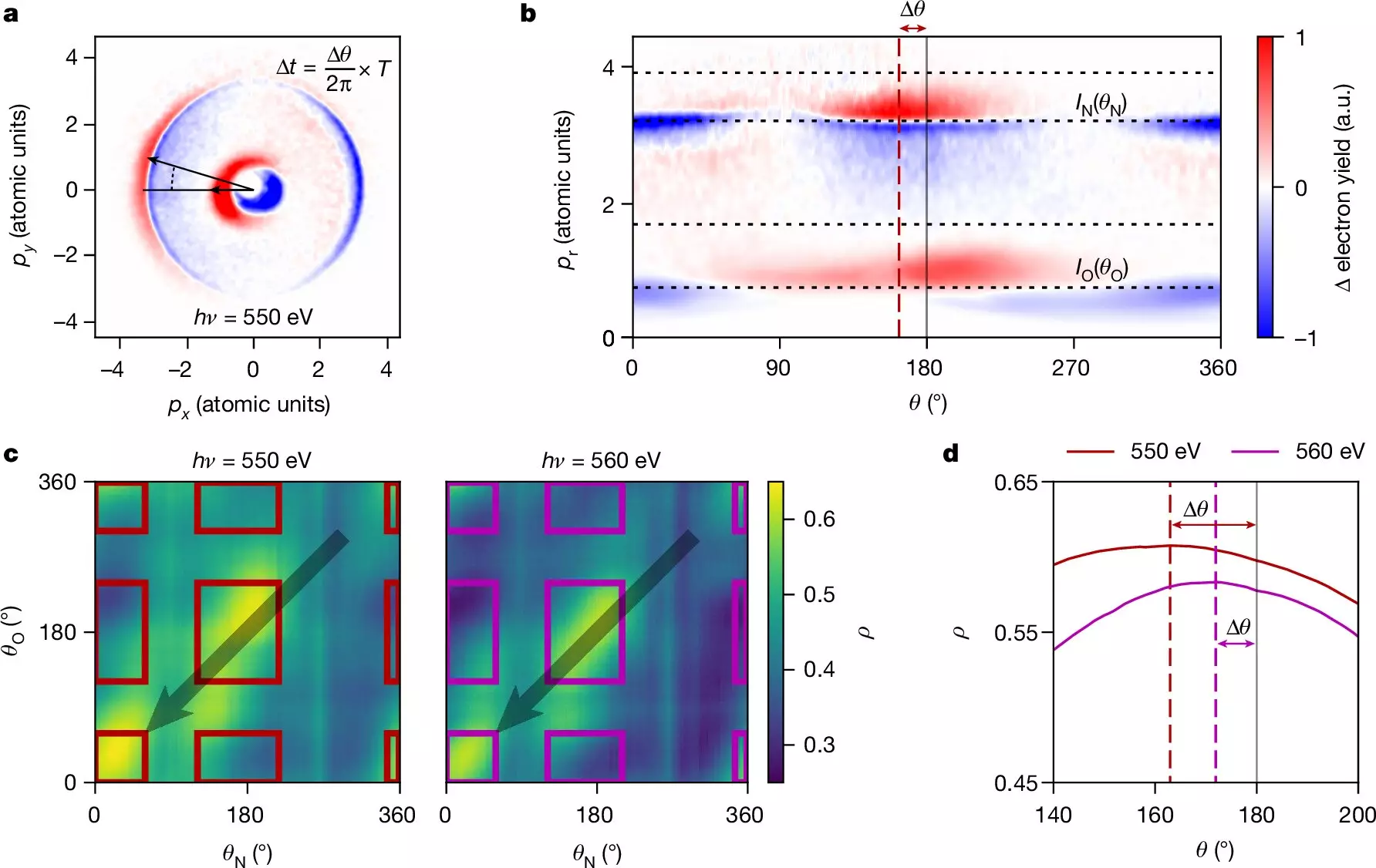A recent study conducted by scientists from the Department of Energy’s SLAC National Accelerator Laboratory has shed new light on the photoelectric effect, a phenomenon first described by Albert Einstein over a century ago. This research has provided valuable information on electron-electron interactions, which are crucial for various technologies such as semiconductors and solar cells. The findings of this study were published in the journal Nature on August 21.
The team of researchers used cutting-edge attosecond science techniques to explore the instantaneous nature of the photoelectric effect. By utilizing an attosecond X-ray pulse generated by SLAC’s Linac Coherent Light Source (LCLS), the scientists were able to ionize core-level electrons in molecules, leading to their ejection. Subsequently, a separate laser pulse was employed to measure the “photoemission delay,” which represents the time gap between photon absorption and electron emission.
The results of the study revealed that the photoemission delays, extending up to 700 attoseconds, were significantly longer than what had been previously theorized. This discrepancy poses a challenge to current theoretical frameworks and presents new avenues for understanding electron behavior. Moreover, the researchers highlighted the role of electron interactions in influencing these delays, underscoring the complexity of the underlying dynamics.
The ability to precisely measure and interpret these time delays has far-reaching implications for diverse fields such as protein crystallography and medical imaging, where X-ray interactions with matter are pivotal. By discerning the angular disparities in the trajectories of emitted electrons, scientists can gain valuable insights into electron dynamics, thereby enhancing the analysis of experimental outcomes.
This study represents just the beginning of a series of planned experiments aimed at delving deeper into electron dynamics within different molecular systems. Other research groups have already begun utilizing the developed technique to investigate more intricate and sizable molecules, unveiling novel facets of electron behavior and molecular structure. As co-author Agostino Marinelli pointed out, the versatility of LCLS enables researchers to explore a wide spectrum of energies and molecular configurations, making it a potent tool for advancing these types of investigations.
The latest breakthrough in understanding the photoelectric effect offers a glimpse into the intricate interplay of electrons within molecules. By unraveling the ultrafast dynamics of photoionization and challenging existing theoretical frameworks, scientists are paving the way for enhanced comprehension of electron behavior and its manifold applications in various technological and scientific domains.

